A row of red-flowered runner, or string, beans is a familiar sight in
a British veg garden. In a good year they
can be hugely productive and give you a green vegetable through the whole of the
summer.
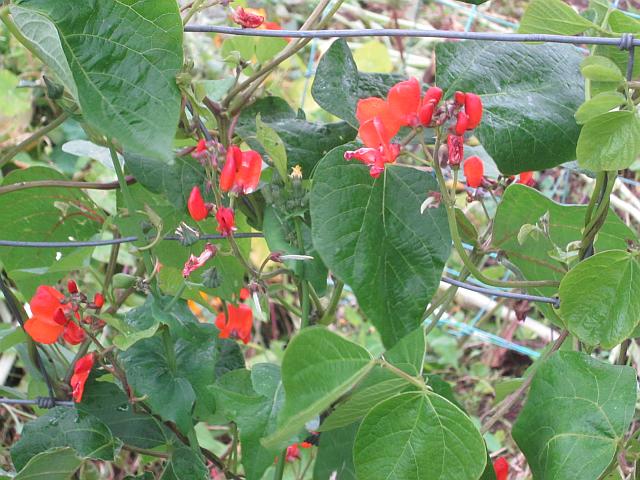
If I grow runner beans then I usually go for a standard variety
such as Scarlet Emperor. It's windy up here in
the hills so I generally avoid wigwams of hazel or bamboo and
construct a stouter structure using agricultural fence posts and
stock netting. To be honest, though, I'm not a great fan of
runner beans. It is said that the British are the only people
who eat them, instead of growing them for their flowers.
Unless eaten young they can be tough and stringy. They can
throw a massive crop at you so that you get a glut.
One way of using up the excess is runner bean chutney , but there are limits to
the amount of this I'd want to eat. Salting is another way to preserve runner beans
and I have tried it in the past but it's so tedious I'd rather buy
frozen beans from the supermarket. An alternative
low-resource idea is to dry the beans for use in the winter.
Ideally the late summer weather should ripen the beans in their
pods and you come along and harvest them just before they
fall. In practice this is a risky strategy and if the weather
is wet you will find the beans going mouldy and maybe even
germinating in the pods. If this is likely to happen then it
is a good idea to pull up the whole plant and hang it up somewhere
dry and airy, like a shed or barn. Beware mice and rats at
this stage! It is possible to dry beans indoors, perhaps
using very gentle
heat from a stove but good ventilation is important, to stop moulds
developing. When the drying process is complete the beans
will have shrunk significantly and become very hard. The runner
bean that I like to dry is Czar . This produces white flowers and a
large white 'butterbean' seed. This is a vital ingredient for
a winter bean casserole, a meal that cooks for half a
Sunday on or in a slow stove whilst you are out gardening.
The beans get just soft enough to soak up the flavours from the
meat (maybe a cheap shoulder cut) and the herbs and spices, garlic
for sure and maybe a touch of smoked paprika. Proper Job!
Bean seeds contain high concentrations of the proteins known as
lectins. These substances can have very
bad effects on your digestion and immune system. When using
bean seeds it is good advice to soak them overnight in water and then boil in fresh
water for a long period. Incidentally, potatoes are
another food source that is high in lectins. There is a
strand of nutritional thought that recommends that we go back to a
diet enjoyed by humans before agriculture, the
paleo diet, because this is seen as being 'natural'. Such
a diet would cut out processed foods, particularly sugars, and
increase the amount of fat we consume - a hunter-gatherer
diet. The consumption of carbohydrate in grains (and beans)
is not seen as a good thing because our gut is not well adapted to
digest them.
Fortunately the seed catalogues carry plenty of alternatives
to the standard runner bean. If you insist in growing runners
then a variety such as Hunter will give less a stringless green
bean. Or you could try growing some of the French climbing
beans that are also stringless.
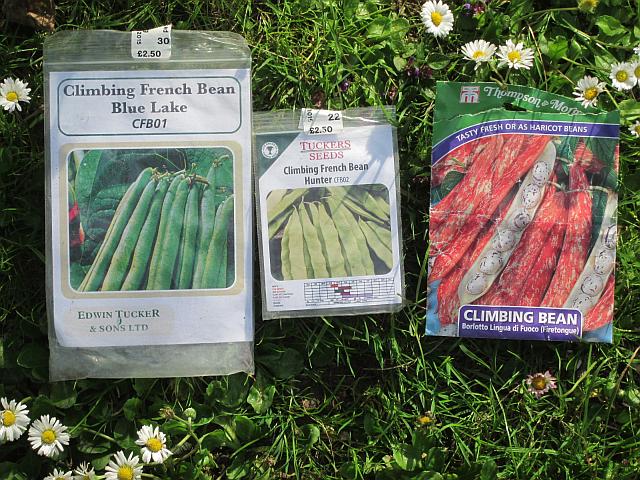
My favourite climber is the Borlotti. This can be grown as an early crop in
the polytunnel and a later crop outdoors. They can be eaten
green but also dry really well and cook
up well in a stew.
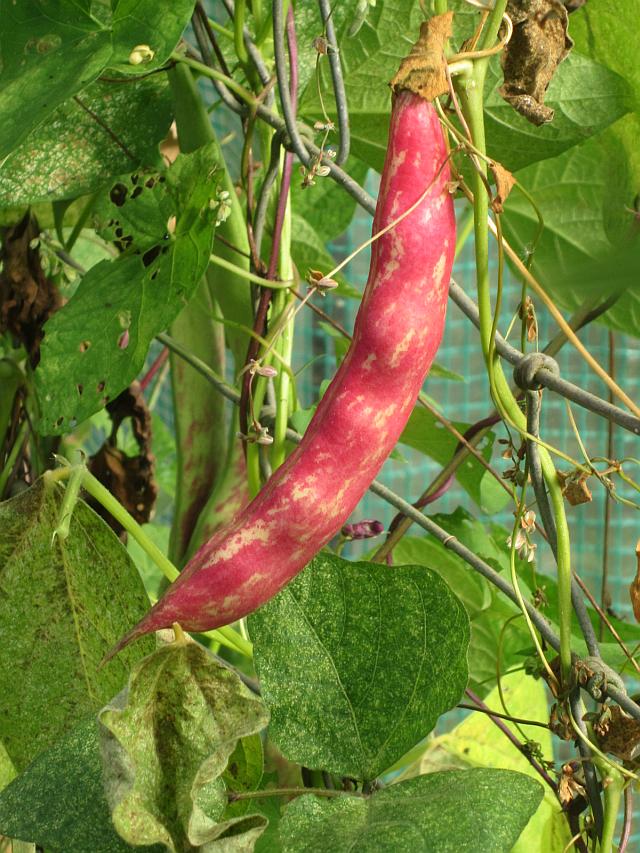
Alternatively have a look at the dwarf beans that are
available.
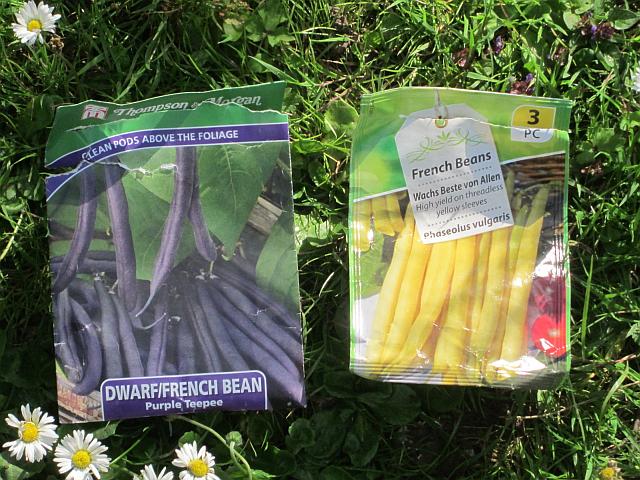
These are stringless and can be grown in succession
throughout the summer and into early autumn. They can also
work well under cover to give an early crop.
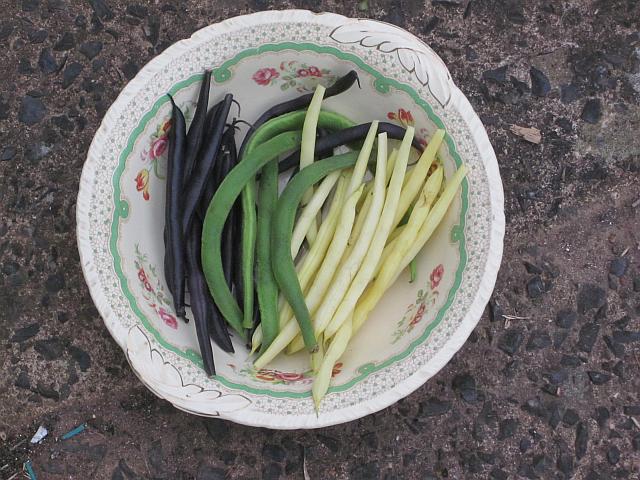
Crop rotation
Beans are part of the legume group of plants that fix nitrogen from
the air into soil. Nitrogen is one of the most important
elements for healthy leafy growth. In 4 course crop rotations legumes (and the onion
family of plants) are planted after the brassicas (cabbages) and
before the potatoes and other crops break. Legumes can make
good use of any manure applied in the autumn or winter before you
grow them.